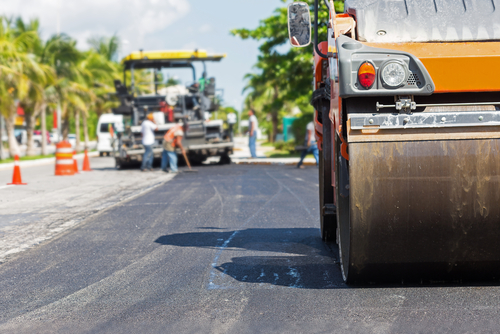
Despite the challenges presented by the coronavirus outbreak and major flooding, Ohio’s infrastructure projects are continuing to move forward.
In November, the Ohio Department of Transportation (ODOT) outlined 10 projects totaling nearly $400 million that the Transportation Review Advisory Council will focus on for 2020.
The projects stretch from a $38 million plan to widen I-75 in Hamilton County in the southwestern part of the state to a $65 million project aimed at widening and making interchange improvements along I-77 in Summit County in the northeastern part of the state.
“As Ohio’s economy continues to grow, we must be able to address the demands put on our roads and bridges,” ODOT Director Jack Marchbanks said in a statement. “These funds allow us to eliminate pinch points, reduce congestion, and make our roads and bridges safer for moving people and goods across Ohio.”
The projects were chosen from a bank of 27 applications for some $925 million worth of road improvements across the state. The advisory council selected the projects after a series of hearings around the state to learn about each of the projects. After narrowing down the list, it approved a draft list and opened a public comment period to hear what Ohioans wanted.
Those projects at the state level will join numerous projects at the local level. And local communities will get help paying for them with state funds.
In January, an increase in the state motor vehicle fuel tax went into effect, giving local governments more money to pay for safety improvements in their communities. Until the passage of the tax, ODOT required local governments to cover 10 percent of the cost of local safety projects. Under new guidelines, the state will now cover 100 percent of the project’s costs.
The fuel tax increase infused an additional $50 million into Ohio’s highway safety program and helped the state invest $158 million annually into road safety. The program is the third-largest of its kind in the country, behind only California and Texas, said Matt Bruning, press secretary for ODOT.
And the extra funding was necessary in order to provide safer roads for Ohio drivers, Bruning said. According to a study of crashes between 2009 and 2018, some 63 percent of all deadly and serious injury crashes occurred on roadways maintained by local governments. The analysis found that seven of 10 fatal crashes involving a pedestrian occurred on roads maintained by local governments, as well.
“For a lot of communities, they were telling us we can’t apply for the grant because we can’t come up with the 10 percent,” Bruning said. “This is a game-changer for them.”
These safety improvement projects cover everything from adding turn lanes, reconstructing rural curves and upgrading signs or pavement markings, and can cost between $200,000 and $5 million.
So far, Bruning said, there is no decision to halt construction projects across the state to help mitigate the spread of COVID-19, as has been ordered in neighboring Pennsylvania.
“As far as we’re concerned, it’s full steam ahead,” he said of ODOT’s announced projects.